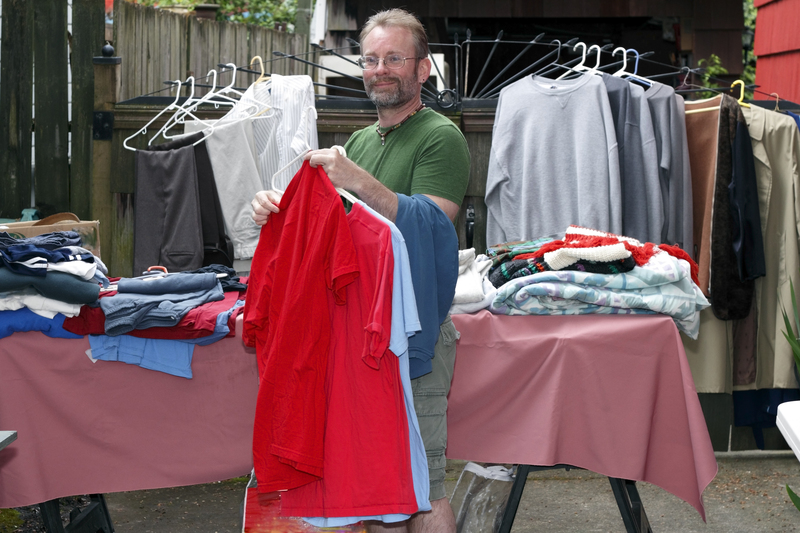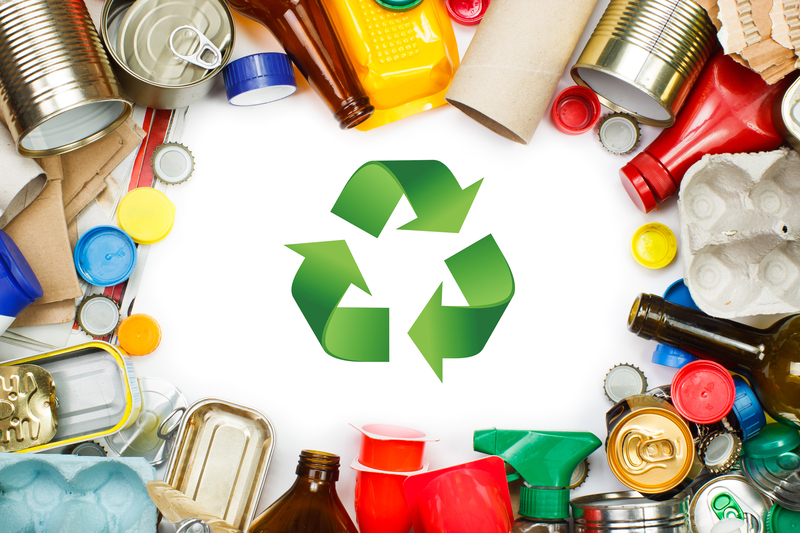Strategies for Minimizing the Environmental Impact of PPE Waste
The COVID-19 pandemic has led to a dramatic increase in the use of personal protective equipment (PPE) worldwide. While PPE such as face masks, gloves, and gowns have played a crucial role in containing the virus, they've also generated an unprecedented volume of waste. Improper PPE disposal is now a significant environmental concern, threatening the health of terrestrial and marine ecosystems. This article explores comprehensive strategies for minimizing the environmental impact of PPE waste, offering actionable solutions for individuals, organizations, and policymakers.
Understanding PPE Waste and Its Environmental Impact
Before we explore mitigation strategies, it's important to understand why PPE waste management is a pressing issue. Most PPE items are made from single-use plastics, such as polypropylene and polyethylene. These materials can take centuries to degrade, contributing to plastic pollution in landfills and waterways, and harming wildlife that may ingest or become entangled in PPE debris.
- Magnitude of the Issue: According to recent studies, an estimated 129 billion face masks and 65 billion gloves are used globally every month since the pandemic began.
- Pollution Pathways: Improperly discarded PPE can block drainage systems, introduce microplastics into oceans, and threaten animal habitats.
- Hazardous Waste: Used PPE can contain pathogens, posing risks to sanitation workers and the public.

Comprehensive Strategies for Reducing PPE Waste Impact
Tackling the environmental impact of PPE disposal demands a multifaceted approach. Here are practical, sustainable strategies for minimizing PPE waste at every stage--from production to disposal.
1. Promotion of Reusable PPE
One of the most effective strategies for reducing PPE waste is transitioning from single-use items to reusable alternatives wherever feasible.
- Cloth Masks: Cloth face masks can be safely washed and reused, reducing dependence on disposable masks for the general public.
- Washable Gowns and Face Shields: Hospitals and clinics can adopt gowns and shields designed for repeated use, implementing strict hygiene protocols for decontamination.
- Glove Alternatives: In non-medical settings, emphasizing regular handwashing may reduce unnecessary glove use.
Key Benefits:
- Reduces plastic waste volume
- Lowers procurement costs over time
- Encourages sustainability in supply chains
2. Eco-Friendly and Biodegradable PPE Materials
Investing in biodegradable PPE is essential for minimizing its environmental footprint.
- Plant-Based Polymers: Researchers are developing masks and gloves from materials like polylactic acid (PLA), derived from starch-rich crops. These bioplastics break down more quickly than petroleum-based plastics.
- Natural Fiber Masks: Some companies offer masks made from layers of cotton, bamboo fiber, or hemp--renewable and compostable materials.
- Compostable Components: Innovations in adhesives, ear loops, and nose bridges further improve the sustainability of PPE items.
Challenges and Solutions:
- Cost and Accessibility: Biodegradable PPE can be pricier, but economies of scale and government subsidies can help.
- Performance Standards: Ensuring eco-friendly materials meet safety and filtration requirements is vital.
3. Encouraging Proper PPE Disposal and Segregation
Effective waste management practices significantly reduce the environmental harm of PPE.
- Designated Bins: Install clearly labeled PPE disposal containers in public spaces, hospitals, and workplaces to keep PPE separate from other waste streams.
- Segregation at Source: Distinguishing contaminated PPE from non-infectious items streamlines treatment and disposal.
- Awareness Campaigns: Public education is crucial--instructing individuals on how, where, and why to dispose of PPE responsibly.
Best Practices:
- Seal used PPE in bags before disposal
- Clearly mark hazardous waste
- Discourage littering through signage and fines
4. Innovative Recycling and Upcycling Solutions
With traditional recycling facilities often unable to process contaminated PPE, innovation is key.
- Specialized Recycling Programs: Initiatives like TerraCycle collect and recycle PPE such as masks and gloves into plastic pellets used for park benches and construction materials.
- Energy Recovery: Some facilities convert incinerated PPE waste into energy--reducing landfill volume and generating useful byproducts.
- Upcycling Art and Infrastructure: Creative projects repurpose clean PPE waste in art, building materials, and landscaping products.
Limitations and Considerations:
- Need for contamination-free waste streams
- Infrastructure investment for large-scale recycling
- Community engagement for successful collection
5. Government Policy and Regulation
Policy interventions are essential for reducing the environmental impact of PPE waste on a national and global scale.
- Extended Producer Responsibility (EPR): Require PPE manufacturers to manage the collection, recycling, or safe disposal of their products.
- Green Procurement Initiatives: Public sector organizations can mandate the purchase of eco-friendly PPE.
- Regulatory Standards: Authorities can develop and enforce guidelines for PPE waste segregation, transport, and treatment.
Examples from Around the World:
- The EU has incorporated PPE waste into its Circular Economy Action Plan, emphasizing resource recovery and design for recyclability.
- Some Asian countries have introduced mandatory labeling for biodegradable PPE.
6. Supporting Research and Innovation
Continued investment in research is necessary to improve the sustainability of PPE.
- Material Science: Advancing materials that offer equal or superior protection while being compostable or easily recyclable.
- Waste Treatment Technologies: Developing chemical or biological PPE decontamination processes that render items safe for recycling or composting.
- Behavioral Science: Understanding and influencing public attitudes towards PPE use and disposal.
7. Community Engagement and Corporate Social Responsibility
A holistic approach requires active participation from businesses, individuals, and NGOs.
- Corporate Social Responsibility (CSR): Companies can implement PPE recycling stations and sponsor awareness campaigns.
- Volunteer Cleanup Drives: NGOs and community groups can organize PPE waste collection events in affected areas.
- Schools and Universities: Educational institutions can incorporate PPE sustainability initiatives into their programs, encouraging students to develop new solutions.
Case Studies: Successful PPE Waste Reduction Initiatives
Let's look at a few inspiring examples of PPE waste management solutions making a positive difference worldwide:
- TerraCycle's PPE Recycling Program (UK, US, Australia): This program provides zero-waste boxes for collecting used masks, gloves, and face shields. The collected items are sanitized and transformed into pellets for manufacturing durable goods.
- Italian Biotech Startup: A startup has begun mass-producing fully compostable face masks from corn starch, ensuring that their PPE returns to the soil within six months of disposal.
- Malaysian Hospital PPE Composting: Hospitals in Malaysia have piloted a composting system for biodegradable gloves and masks, reducing landfill pressure and producing fertile compost for landscaping.

Practical Actions for Individuals to Minimize PPE Waste Impact
Every person can contribute to minimizing PPE waste. Here's how:
- Choose Reusables: Where safe, opt for reusable masks and face shields instead of disposables.
- Dispose Responsibly: Use marked bins for your PPE and avoid littering in public spaces.
- Advocate and Educate: Spread awareness about the environmental consequences of PPE waste and promote sustainable alternatives in your community.
- Support Green Innovations: Purchase PPE products from companies committed to eco-friendly practices and materials.
Conclusion: Building a Sustainable Future with Smarter PPE Waste Management
The environmental impact of PPE waste is a challenge that demands immediate and ongoing action. By adopting a combination of reusable PPE strategies, supporting the development and procurement of compostable materials, implementing proper disposal systems, innovating in recycling methods, enacting smart policies, and engaging communities, we can make significant strides toward minimizing PPE pollution.
As the world continues to face new public health threats, it's vital that our approaches to PPE waste management are both effective and sustainable. Everyone--from policymakers and manufacturers to healthcare facilities and individuals--can play a part. By working together and embracing innovative, eco-friendly solutions, we can protect both human health and our precious environment for generations to come.
Together, let's redefine PPE waste not as a lasting liability, but as an opportunity for positive environmental change.